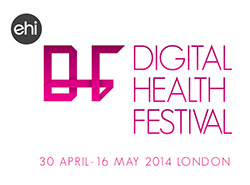Joining up is hard to do
- 12 May 2014

Any discussion of interoperability tends to be conducted in acronyms. Yet, as Ed Conley, an informatics analyst working for the Academic Health Science Network in the South West of England, points out, there is a simple idea at its heart.
“Interoperability is a means to collaborate, with the benefit of integrating care,” he told a summit held during EHI’s Digital Health Festival, which set out to take stock of what is happening internationally, what can be adopted in the UK, and where there are barriers to progress.
Portals and their perils
For the past decade, questions about interoperability in England were supposed to be answered by the National Programme for IT, which set out to ‘rip and replace’ the wide range of administrative and clinical systems in use in trusts with new, ’strategic’ systems.
This was not the approach taken in Wales, and is not the approach taken more recently in Northern Ireland. Gary Bullock, the ICT technical director of the NHS Wales Informatics Service, told the summit about its approach.
He said NWIS had set out to create a “gold standard” demographics service to be used by various systems and a portal or presentation layer to give clinicians a consistent view of systems that include Wales’ own patient administration system, Myrddin, and nationally-procured digital imaging and pathology systems.
“We are now looking at documents,” he added, saying Wales is looking to create a national documents repository, from which documents can be retrieved and shared.
“The key message is that we are working on structured information and applications, launched from the portal. It is a pragmatic approach where movement of the data itself is not practical or affordable.”
Des O’Loan, who leads on e-health programmes for the Northern Ireland Health and Social Care Board, said it had taken a similar approach; but that it had decided to build on a commercial portal from Orion, which uses the Rhapsody integration engine.
He told the summit this had enabled Northern Ireland to make rapid progress, with 10,000 staff logging on since the portal went live in June last year, against a target of 3,000.
However, he acknowledged that there might be issues sharing information from the portal with other health systems, and with creating an environment in which smaller companies and app providers could plug in new services.
“We want to do that through a set of application programming interfaces. That is how we are hoping to connect new things and get our data back,” he said, adding that the board is in discussions with Orion about this at the moment; although some delegates were clearly sceptical about how easy these would be.
The future’s bright, learn from Orange
Back in England, Inderjit Singh, the head of enterprise architecture at NHS England, outlined a third approach; one that moves away from the ‘rip and replace’ philosophy of NPfIT, but without building or buying a national portal to knit everything together.
Singh indicated that the commissioning board and the Health and Social Care Information Centre are instead looking at a number of areas; starting with using the Clinical Digital Maturity Index developed by EHI Intelligence to help fill gaps in trust systems, with “some support” from the Technology Fund.
Other areas of activity include “putting in other foundation blocks”, such as interoperability standards and open application programming interfaces, and creating an “architecture for interoperability” in which information can be both pushed and pulled between systems as required.
Eventually, Singh argued, this “holistic” approach to interoperability will enable the NHS in England to more easily share records and accommodate the “explosion” of apps, wearable technology, and demands for “blue button” downloads of patient records.
However, it is an approach that depends on the adoption of standards at every level; from defining how information should be recorded, to how it should be sent between systems.
The summit heard that, when it comes to setting and adopting standards, the NHS has a lot to learn from other industries.
Ian Hay, the head of emerging technologies at Orange, and technical chair of the Continua Health Alliance, pointed out that it was the introduction of standards that enabled mobiles on different networks to make and take calls from each other.
These days, it is also standards that enable mobiles to exchange SMS messages and other data and – after considerable effort – use the same chargers.
“We saw exponential growth [in the mobile industry] when we agreed standards of the kind that we have not seen in healthcare [IT],” he said. “If [healthcare IT] can make the same kinds of advances [in standards] then it should see similar rates of growth.”
Herds of Antilope
A lot of work is going on in Europe. Roger Wallhouse, the director of IHE UK, gave the summit an overview of the Antilope programme, which aims to promote interest in standards, both to support integrated healthcare and companies trying to work in global market.
Antilope has been working on use cases – for exchanging information between the different systems used in digital imaging or sending and receiving test requests and results – and setting out both functional specifications (what needs to happen) and realisation scenarios (how to make it happen).
From this, it has created “profiles” (“building blocks” for delivering projects), which include relevant standards.
Other elements of the Antilope programme include a quality management system for testing interoperability – which Hay said the mobile industry learned was essential when it tried to cut costs on testing 3G – and a set of testing tools.
Despite this, Wallhouse said, the use of standards in the English healthcare system is “fragmented.” Many factors mean “we have history of companies wanting to lock people into proprietary systems.”
And even if trusts want to use standards in implementations and projects, they may pick different standards to another organisation from the wide range available, or apply them partially or inconsistently.
Like many others at the summit, Wallhouse argued this needs to change. But in that case, why is change so hard? Does the fault lie with companies, for not wanting to “play nicely together”, or with trusts, for not insisting that they do?
Is the problem that there are just too many standards to pick from? In his presentation, Hay suggested this was certainly an issue; but Singh argued that a “pragmatic” approach is needed, with different standards used in different circumstances.
For example, he said NHS England was looking at FHIR – a new iteration of the HL7 message standards – for e-referrals, while another package of standards might be needed for personal health records. “We need to focus on using what is out there, and understanding where the different standards are applicable to the business processes and information flows that we are trying to support,” he said.
In that case, getting scenarios properly tested and understood will be particularly important. So is another stumbling block that testing and accreditation, on which Antilope has been working so hard, is not easy to grasp, or that testing tools are not up to the job?
Getting the strategy in place
Delegates certainly felt that Antilope needed to cover more profiles; and that some of the paperwork for the profiles that exist is daunting. There was some scepticism about whether companies can be expected to cover the cost of testing and accreditation, given the low return that they get on this investment at the moment.
But at the end of the day, they returned to the basic question of who is responsible for breaking the present impasse when it comes to getting standards adopted. In a lively final debate, some speakers were happy to blame companies for wanting to ‘lock in’ customers by using proprietary systems.
But plenty of others felt that healthcare organisations were partly responsible, for failing to insist on implementable standards in tenders, to use the interoperability toolkit where appropriate, or to find out what standards might be available and what best practice might look like.
What could break this circle? One delegate argued it had to be government. “If you look at the national programme; it tried to tie down standards and who you could buy from. It was doomed to failure, and fail it did,” he said. “Unfortunately, when it did they threw the baby out with the bathwater.
“If the concept of proper control over specifications and standards had been kept… if somebody had not just said ‘it would be nice to do this and let’s let hospitals try it out, which was the idea behind the ITK, more or less… if they had issued an edict that said ‘thou shalt’ use preferably UK, but failing that England-wide standards… that would have gone a long way towards telling trusts what they were meant to be doing and suppliers what they were meant to be using.”
To back this up, another delegate argued that companies that wanted to work on the continent were showing new interest in IHE standards thanks to the Danish government’s decision to insist on them; and an indication from some Scandinavian countries that they might do the same.
Other speakers argued that if – as seems to be the case – the English government is reluctant to move in this direction, it at least needs to be clear about what kind of electronic patient records it wants NHS organisations to adopt, and why.
If there was more clarity about the policy and business case for IT, everybody would be clearer about what they should be doing, which might promote local debate about how to do it; although some exemplar projects might help.
“What’s the strategy, what’s the plan?” one delegate asked. That’s a question that will become even more pressing as more tech fund money is released, and the NHS waits for the technology strategy that is supposed to make sure it will be put to good use.
Unfortunately, it’s a question that’s likely to be even harder to answer than how to promote interoperability, or which set of standards and testing approaches to use.
More information about the event is available on the IHE UK website. The summit was the UK dissemination point of the Antilope project, and a number of international experts presented including: Jos Devlies, medical director, EuroRec; Vincent Van Pelt, NICTIZ, The Nederlands; Morten Bruun-Rasmussen, MEDIQ, Denmark; and Milan Zoric, ETSI, France. Their in-depth presentations on aspects of the project are also on the website.

The Digital Health Festival continues this week. Full details are on its website. Don’t forget about the EHI Pub Quiz, which takes place in King’s Cross, London, on 14 May; we look forward to seeing you there!




